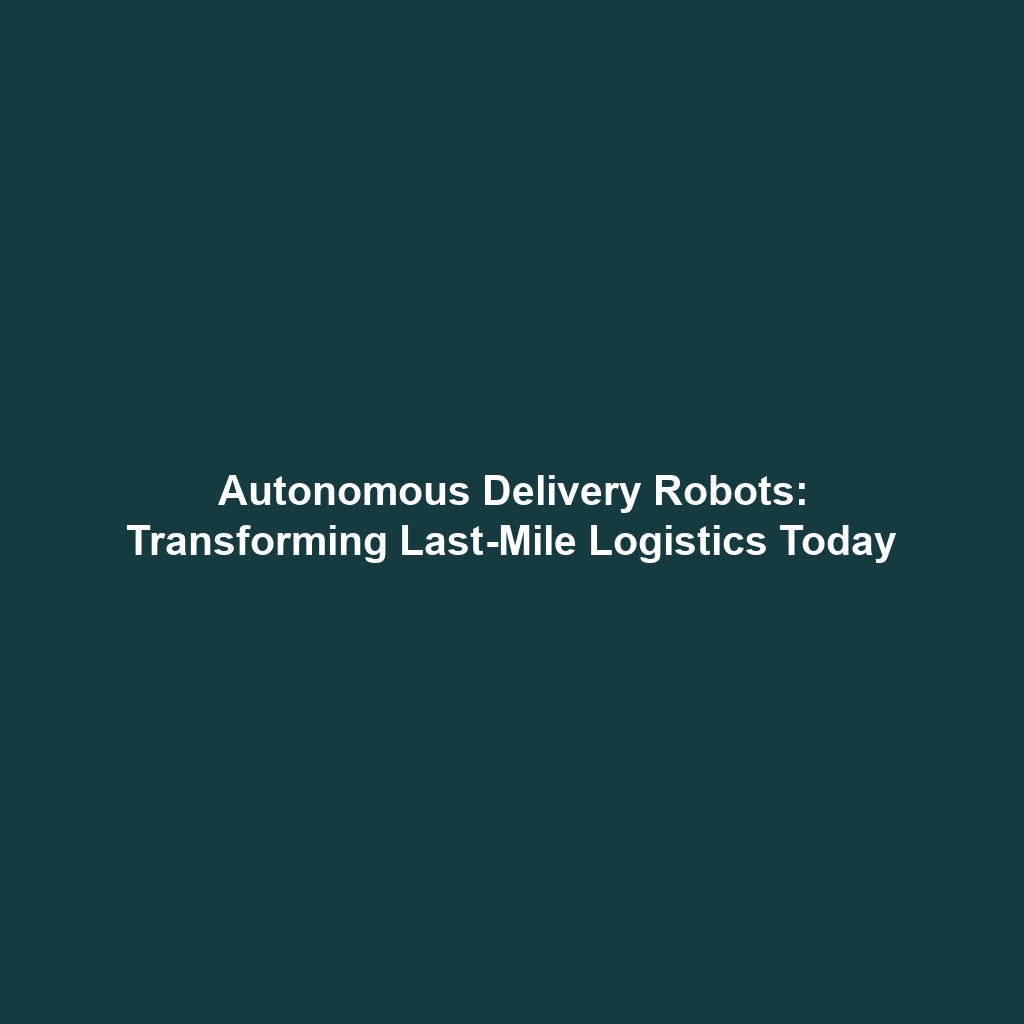Autonomous Delivery Robots: Revolutionizing Last-Mile Delivery
In the era of online shopping, the demand for efficient delivery solutions has surged, making Autonomous Delivery Robots a crucial component in transforming last-mile logistics. These innovative machines are designed to navigate urban landscapes while transporting goods directly to consumers’ doorsteps. As a subset of Autonomous Robots, they combine advanced robotics, artificial intelligence, and machine learning to improve delivery efficiency and reduce operational costs. This article explores the significance of these robots within the broader context of autonomous technology.
Key Concepts
Autonomous Delivery Robots operate on several key principles that enable them to function effectively in dynamic environments. These concepts include:
Navigation and Mapping
Utilizing GPS, cameras, and sensors, these robots create real-time maps of their surroundings, allowing them to navigate complex urban settings with ease.
Obstacle Detection
Equipped with advanced sensors, Autonomous Delivery Robots can detect and avoid obstacles, ensuring safe and efficient deliveries.
Artificial Intelligence
AI algorithms play a critical role in decision-making processes, enabling robots to optimize routes and adapt to changing conditions.
Applications and Real-World Uses
The application of Autonomous Delivery Robots extends across various industries, revolutionizing the traditional delivery process. Notable examples include:
- E-commerce Deliveries: Companies like Amazon and Walmart are experimenting with autonomous robots to enhance their last-mile delivery services.
- Food Delivery: Restaurants and delivery services, such as Domino’s, have deployed these robots to deliver food quickly and efficiently in urban areas.
- Healthcare Logistics: Hospitals utilize autonomous robots to transport medical supplies, boosting efficiency and reducing human contact, especially during pandemics.
Current Challenges
Despite their potential, several challenges hinder the widespread adoption of Autonomous Delivery Robots. These include:
- Legal and Regulatory Issues: The regulatory framework for the use of autonomous robots in public spaces is still evolving.
- Public Acceptance: There are concerns about safety and privacy that need to be addressed to gain public trust.
- Technical Limitations: Environmental factors such as weather conditions can affect the robots’ performance.
Future Research and Innovations
As technology advances, the future of Autonomous Delivery Robots promises several exciting developments:
- Improved AI Algorithms: Enhanced machine learning capabilities will enable better navigation and decision-making.
- Integration with Smart Cities: Future robots may interact with urban infrastructure for more streamlined operations.
- Increased Autonomy: Next-gen robots may operate completely without human intervention in designated areas.
Conclusion
Autonomous Delivery Robots are set to revolutionize last-mile delivery, representing a significant innovation within the field of Autonomous Robots. By addressing current challenges and embracing future advancements, these robots can significantly enhance logistics and service efficiency. To learn more about related topics in autonomous technology, visit our articles on robotics innovation and the future of delivery technology.
